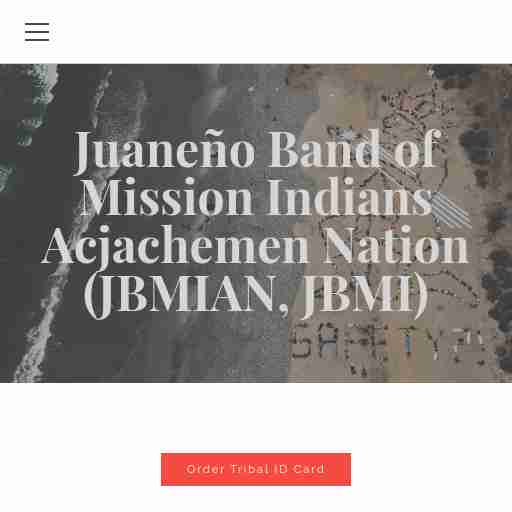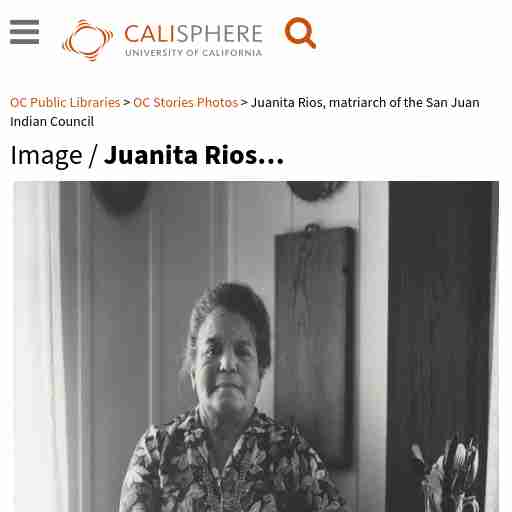The Capistrano Indian Council is a non-profit organization that is dedicated to preserving the cultural heritage of Native Americans. The council was established in 1961 and has since been working tirelessly to promote awareness, education, and appreciation for the rich history and traditions of Native American tribes.
The Capistrano Indian Council was founded by a group of concerned citizens who recognized the need to preserve the cultural heritage of Native Americans. The council started as a small grassroots organization but has grown over the years to become one of the most respected and influential organizations in the country.
Today, the council works with various tribal communities across the United States to promote cultural exchange programs, educational initiatives, and community outreach programs. Their efforts have helped to raise awareness about important issues facing Native American communities, including poverty, healthcare disparities, and discrimination.
The mission of the Capistrano Indian Council is to promote awareness, education, and appreciation for Native American culture while also advocating for social justice and equality for all indigenous peoples. The council aims to achieve this mission through a variety of programs and initiatives that focus on:
The Capistrano Indian Council recognizes that preserving Native American culture is essential for maintaining a strong sense of identity among tribal communities. To this end, they offer various cultural preservation programs that aim to protect traditional practices and customs from being lost over time.
Some of the cultural preservation programs offered by the council include:
The Capistrano Indian Council believes that education is key to promoting understanding and appreciation for Native American culture. To this end, they offer various educational initiatives that aim to raise awareness about the history, traditions, and contemporary issues facing indigenous communities.
Some of the educational initiatives offered by the council include:
The Capistrano Indian Council recognizes that many Native American communities face significant social justice challenges, including poverty, healthcare disparities, and discrimination. To address these issues, the council offers various advocacy programs that aim to promote social justice and equality for all indigenous peoples.
Some of the social justice advocacy programs offered by the council include:
The Capistrano Indian Council recognizes that building strong relationships between tribal communities and the broader public is essential for promoting understanding and appreciation for Native American culture. To this end, they offer various community outreach programs that aim to foster positive relationships between indigenous communities and non-Native Americans.
Some of the community outreach programs offered by the council include:
The Capistrano Indian Council recognizes that environmental conservation is an essential component of preserving Native American culture. Many indigenous communities have a deep spiritual connection to the natural world, and protecting the environment is crucial for maintaining traditional practices and customs.
To this end, the council offers various environmental conservation programs that aim to protect natural resources while also promoting sustainable development practices. Some of these programs include:
The Capistrano Indian Council is a non-profit organization dedicated to preserving Native American culture through education, advocacy, and community outreach.
The council was established in 1961 by a group of concerned citizens who recognized the need to preserve the cultural heritage of Native Americans.
The council offers various programs and initiatives that focus on cultural preservation, education, social justice advocacy, community outreach, and environmental conservation. Some of these programs include language classes, cultural workshops, scholarship programs for Native American students, lobbying efforts to promote policy changes that benefit indigenous communities, and land conservation initiatives.
The Capistrano Indian Council is an essential organization that plays a vital role in preserving the cultural heritage of Native Americans. Through their various programs and initiatives, the council has helped to promote awareness, education, and appreciation for indigenous culture while also advocating for social justice and equality for all indigenous peoples.
If you are interested in learning more about the Capistrano Indian Council or supporting their efforts to preserve Native American culture, please visit their website or contact them directly.

Juaneño Band of Mission Indians Acjachemen Nation (JBMIAN, JBMI) · Admin Comp Documents and Missing Documents (Enrolled members only) · Open Council Meeting ( ... Juaneño Band of Mission Indians ONLY FOR EXISTING ENROLLED MINOR MEMBERS Your browser does not support viewing this document. Click here to download the document. jbmian_application_packet__1_.pdf Your browser does not support viewing this document. Click here to download the document. ALL MINOR TO ADULT APPLICATIONS AND LETTERS OF SUPPORT MUST BE NOTORIZED IF NOT SIGNED IN PERSON AT TRIBAL HALL. Once complete please scan and email to webdirector@jbmian.com- Admin Comp Documents and Missing Documents Once complete please scan and email to webdirector@jbmian.com- Click image above to access latest newsletter Time: 07:00 PM Pacific Time (US and Canada) Every month on the First Monday Mar 4, 2024 07:00 PM Apr 1, 2024 07:00 PM May 6, 2024 07:00 PM Jun 3, 2024 07:00 PM Jul 1, 2024 07:00 PM Aug 5, 2024 07:00 PM Sep 2, 2024 07:00 PM Oct 7, 2024 07:00 PM Want it in your calendar? Use this link to download the files to your calendar system. Join Zoom Meeting ONLINE WITH VIDEO: Copy and paste - system will enter the password for you! Time: 12:00 PM Pacific Time (US and Canada) Every month on the Third Saturday Feb 17, 2024 12:00 PM Mar 16, 2024 12:00 PM Apr 20, 2024 12:00 PM May 18, 2024 12:00 PM Jun 15, 2024 12:00 PM Jul 20, 2024 12:00 PM Aug 17, 2024 12:00 PM

Before the arrival of Europeans in Orange County, the Indians of the area were ... passing within one family, and a council of men who aided that leader. San Juan Capistrano is unique in Orange County and a rarity in California, a community whose foundation was laid by the earliest people to inhabit the land, and a community still evolving after more than 220 years. California history, and therefore San Juan Capistrano history, is often divided into five major eras: Prehistory, the Spanish era, the Mexican/Rancho Era, Statehood, and the Twentieth Century. Before the arrival of Europeans in Orange County, the Indians of the area were largely peaceful hunter-gatherers. Tribes had a monarchic form of government, with leadership passing within one family, and a council of men who aided that leader. War was never waged for conquest, but to avenge crimes against family members or leaders. A deity called Chinigchinich was worshiped in religious ceremonies held in a small temple structure located in the center of each community. Spanish missionaries divided Orange County Indians into two groups based on their proximity to area missions: Juanenos (originally Acagchemem) and Gabrielinos. It is thought there were in reality many small tribes, all belonging to the Shoshone family, sharing common linguistic roots. Abundant evidence of prehistoric Indian life has been found within San Juan Capistrano and several local families trace their lineage to the Juaneno band. Two factors were essential to Franciscan Missionaries in placing the California missions: first, a site with ample fresh water and arable land, and second, a native population of prospective converts to do the work of the church and eventually become Spanish citizens. The Capistrano Valley offered both, and so on November 1, 1776, Mission San Juan Capistrano became the seventh mission in the California chain, beginning the Spanish Era in San Juan.

San Juan Capistrano (Calif.) About the collections in Calisphere. Learn more about the collections in Calisphere. View our statement on digital primary ... OC Public Libraries OC Stories Photos Teeter Romero, painter and San Juan Indian Council member View source image on contributor's website. Have a question about this item? Item information. View source record on contributor's website. Teeter Romero, painter and San Juan Indian Council member Teeter Romero, member of the San Juan Indian Council. Teeter is a Juaneno Indian, a tribe which has been in the San Juan area since before the Mission was built. Teeter is a painter and also weaves traditional Indian baskets. She also has won many trophies for horsemanship. She is married and has two sons. About the collections in Calisphere Learn more about the collections in Calisphere. View our statement on digital primary resources. If you're wondering about permissions and what you can do with this item, a good starting point is the "rights information" on this page. See our terms of use for more tips. Has Calisphere helped you advance your research, complete a project, or find something meaningful? We'd love to hear about it; please send us a message. Explore related content on Calisphere: 0: Teeter Romero, painter and San Juan Indian Council member 1: Olivares family at Mission San Juan Capistrano 2: Teeter and Allen Olivares, San Juan Capistrano 3: Children in front of Mission San Juan Capistrano, 1920s 4: Acjachemen (Juaneño) tribal gathering at Matt Belardes' place, San Juan Capistrano, 1950s 5: Acjachemen (Juaneño) tribal gathering at Matt Belardes' place, San Juan Capistrano, 1950s
---

A member of the Juaneno tribe, her family has been in San Juan Capistrano for ten generations. She is a descendant of Feliciano Rios, one of the Spanish ... OC Public Libraries OC Stories Photos Juanita Rios, matriarch of the San Juan Indian Council View source image on contributor's website. Have a question about this item? Item information. View source record on contributor's website. Juanita Rios, matriarch of the San Juan Indian Council Juanita Rios, matriarch of the San Juan Indian Council. A member of the Juaneno tribe, her family has been in San Juan Capistrano for ten generations. She is a descendant of Feliciano Rios, one of the Spanish soldiers who helped build the Mission San Juan Capistrano. About the collections in Calisphere Learn more about the collections in Calisphere. View our statement on digital primary resources. If you're wondering about permissions and what you can do with this item, a good starting point is the "rights information" on this page. See our terms of use for more tips. Has Calisphere helped you advance your research, complete a project, or find something meaningful? We'd love to hear about it; please send us a message. Explore related content on Calisphere: 0: Juanita Rios, matriarch of the San Juan Indian Council 1: Lorrian Erro, San Juan Capistrano, member of the Juaneno tribe 2: Ricardo family portrait, members of the Juaneno tribe, San Juan Capistrano 3: Children in front of Mission San Juan Capistrano, 1920s 4: Capistrano Gourd Singers, Mission San Juan Capistrano 5: Acjachemen Tribal Reunion 2000 San Juan Capistrano 6: Tribal gathering, Juaneno, San Juan Capistrano 1994 7: San Juan Capistrano, outer courts housing